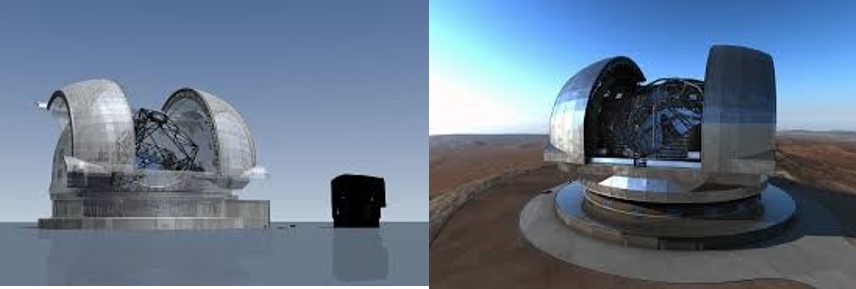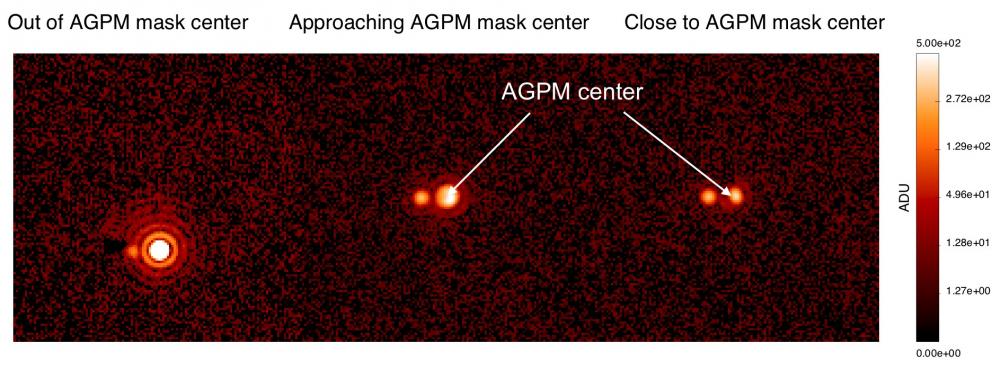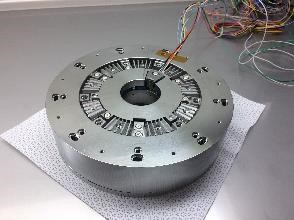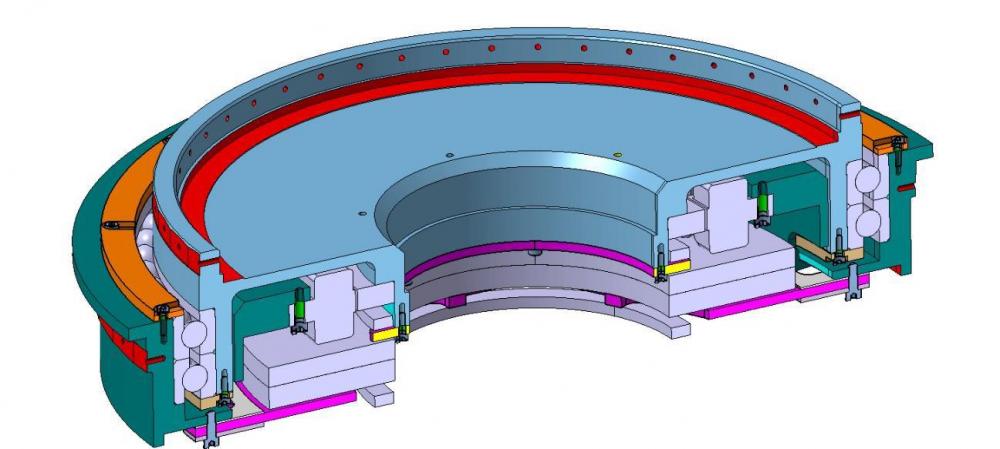
Artist views of the future giant ELT telescope located at Cerro Armazones (Chile). For comparison, the size of current largest telescopes is shown in silhouette.
On May 18th 2020, ESO formally closed the preliminary design review of the ELT/METIS thermal infrared instrument. Following this important milestone, the instrument enters into the final design phase (phase C) in which the its design will be frozen just before its building.
A telescope with unrivalled performance
with the MICADO and HARMONI instruments, METIS is an ELT first light instrument observing in the L-M-N atmospheric infrared bands (3.5-13 μm). This instrument will be able to use all the power of the ELT 39m aperture which will deliver images with an unprecedented sharpness thanks to its extreme adaptive optics corrective built-in system. It will observe the warm matter of the universe (300-3000K) in various environments such as the interstellar medium, the central regions of active galaxies, protoplanetary disks in which planets are forming and small bodies of the solar system.
METIS will have a unique angular resolution at its wavelength, 5 times better than that of current similar instruments and 6 times that of the future infrared space telescope JWST. It will combine a 25 times better sensitivity compared to current instruments, with unique high contrast capabilities based on a suite of new generation phase mask coronographs. These extreme performances will allow METIS to be a one of a kind instrument for the characterization of known exoplanets.
Irfu CEA participates in several batches in the METIS project :
Characterization of science focal planes detectors
The METIS instrument will be equipped with two flavors of detectors in order to cover the different bands. The L-M bands imaging focal plane will be HAWAII 2-RG detector while the IFU spectroscopic mode will need a mosaic of 2x2 of those in order to provide field/wavelength coverage large enough. HAWAII 2-RG are MCT 2000 x 2000 detectors with 18 μm pitch and are manufactured by the Teledyne company. The N band detector baseline has recently changed for the new generation Teledyne Geosnap MCT detector.
The CEA has worked on an will contribute to the detectors characterization with the goals of understanding their fine behavior with the different parameters (temperature, biases, etc..) and pin-point the best science operations trade-offs.
Design and integration of the general purpose cryo mechanisms (ICAR)
With the feedback from past projects (VISIR, MIRI, EUCLID), the CEA-Irfu is in charge of the production of the cryogenic mechanisms so-called ICARs. In the METIS instrument, 12 ICAR units will be mounted to actuate the optical wheels of the imager, the spectrometer, the common fore optic or the AO imager.
Significantly reducing the production cost was the main driver for the ICAR mechanism design. This goal is achieved, as the estimated recurrent cost is about 40k€ (which is about 2.5 lower than the EUCLID mechanism). In 2019, the first ICAR prototype was built and it is run under cryogenic environment for intensive test campaign.
Design and realization of the field derotator mechanism.
In order to keep the background noise at its lowest level, and try to reach the ELT diffraction limit, the METIS consortium made the decision to place the field derotator* inside the cryostat. The CEA-IRFU is responsible of the design, the development, the qualification of the field derotator mechanism, which main specifications are very low rotation speeds (0.005°/s up to 0.25°/s) combined with high angular accuracy (7 arcsec) and operating under vacuum, at 60K. This is a kind of breakthrough technology as no other instrument uses a cryogenic actuator for its field derotator mechanisms.
*a field derotator allows to maintain fixed the instrument field of view, which otherwise would rotate with the Earth.
Validation tests of N-band AGPM coronographs
These masks will be manufactured by Uppsala university under cover of the Liege (ULG) consortium partner. These masks are a key and strategic component for the high-contrast imaging modes of METIS, particularly for the exoplanets future observations.
The CEA has undertaken a internal project to refurbish the former MIRI testbed to upgrade it to the METIS coronographs tests requirements. This workstation is now equipped with a large capacity mid-infrared detector (Aquarius) and new laser sources in order to meet with the specifications of a signal to noise ratio of 1000 in 1s. The first light image obtained with an old generation AGPM coronograph has is shown (see adjacent figure).
Contacts Irfu : Eric Pantin (DAp), Jean-Christophe Barrière (DIS)

first light image obtained on the N-band AGPM testbed. Leftmost image shows the laser source out of the AGPM mask. Center and rightmost one show the attenuated source (factor~70) under the mask. A secondary source left to the main one is seen in all images, and can be used to mimic a faint source close to a bright primary one.
The METIS project benefited, for these lots, from the financial and technical support of CEA-IRFU, DIM-ACAV, and INSU (CSAA).
Further informations :
The METIS consortium consists of NOVA (Netherlands Research School for Astronomy represented by the University of Leiden, The Netherlands), the Max Planck Institute for Astronomy (MPIA, based in Heidelberg, Germany), the University of Cologne (Germany), the UK Astronomy Technology Centre (UKATC, in Edinburgh, Scotland, UK), the KULeuven (Belgium), the Saclay Nuclear Research Centre (CEA Saclay, France), the Paris Saclay research center of the CEA (The French Alternative Energies and Atomic Energy Commission), Center for Astrophysics and Gravitation (CENTRA, University of Lisbon, Portugal), ETH Zürich (Switzerland), A* (an Austrian partnership represented by the University of Vienna, the University of Innsbruck, the University of Graz, the University of Linz, and RICAM Linz, Austrian Academy of Sciences, Austria), the University of Michigan at Ann Arbor (United States), Academia Sinica Institute of Astronomy and Astrophysics in Taipei (Taiwan), and the Université de Liège (Belgium), with contributions from ESO.
Links
• Structure and evolution of the Universe Thèmes de recherche du Service d'astrophysique
• Department of Astrophysics (DAp) // UMR AIM • The Systems Engineering Division
• Cosmology and Galaxy Evolution • Dynamics of Stars, Exoplanets and their Environment • Star Formation and Interstellar Medium • Quality and Space Integration • Space Systems and Architectures • Electrical Engineering Studies and Integration Laboratory (LEIGE) • Industry Liaison Laboratory (LRI) • Laboratory of Development and Integration of Control System (LDISC)






